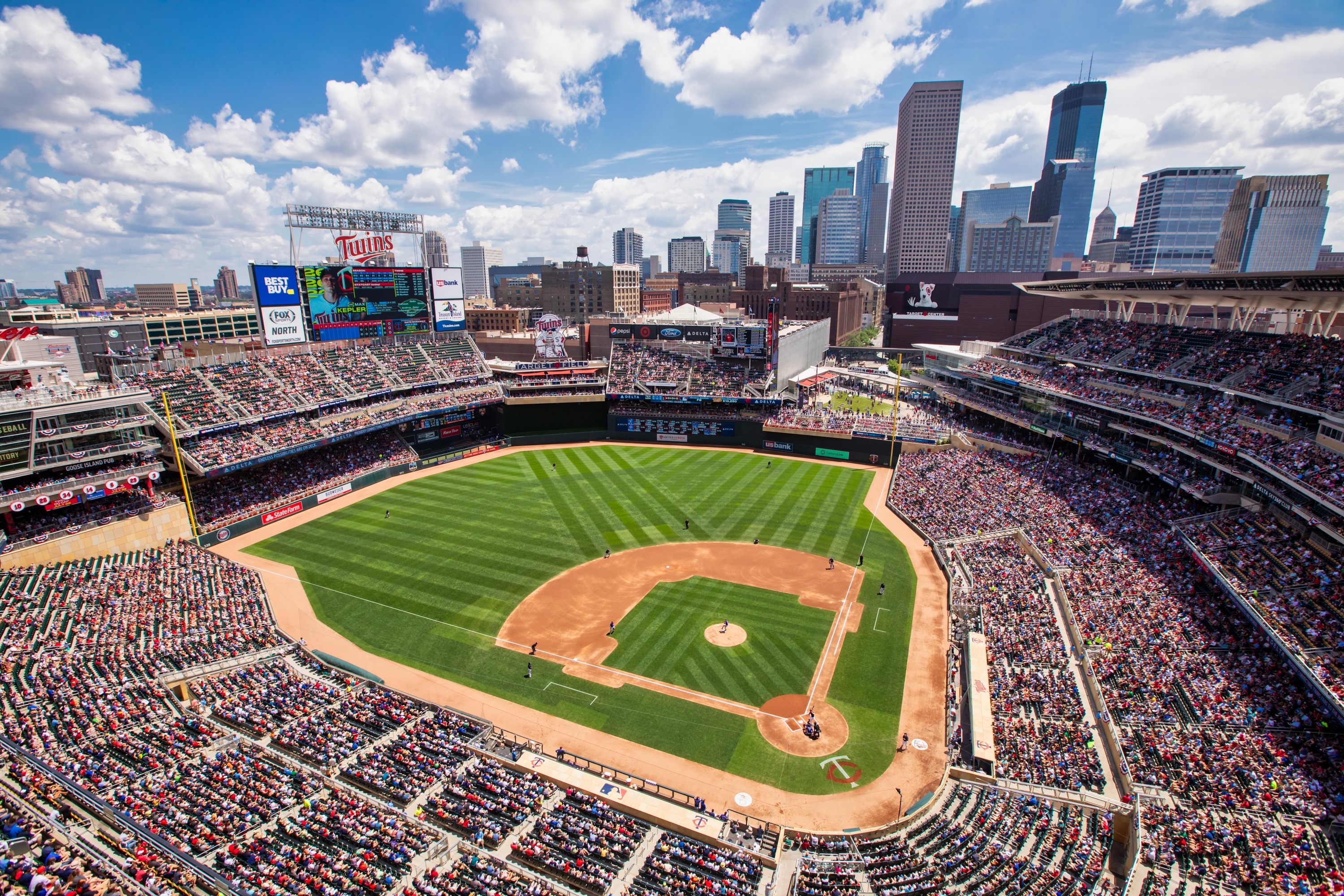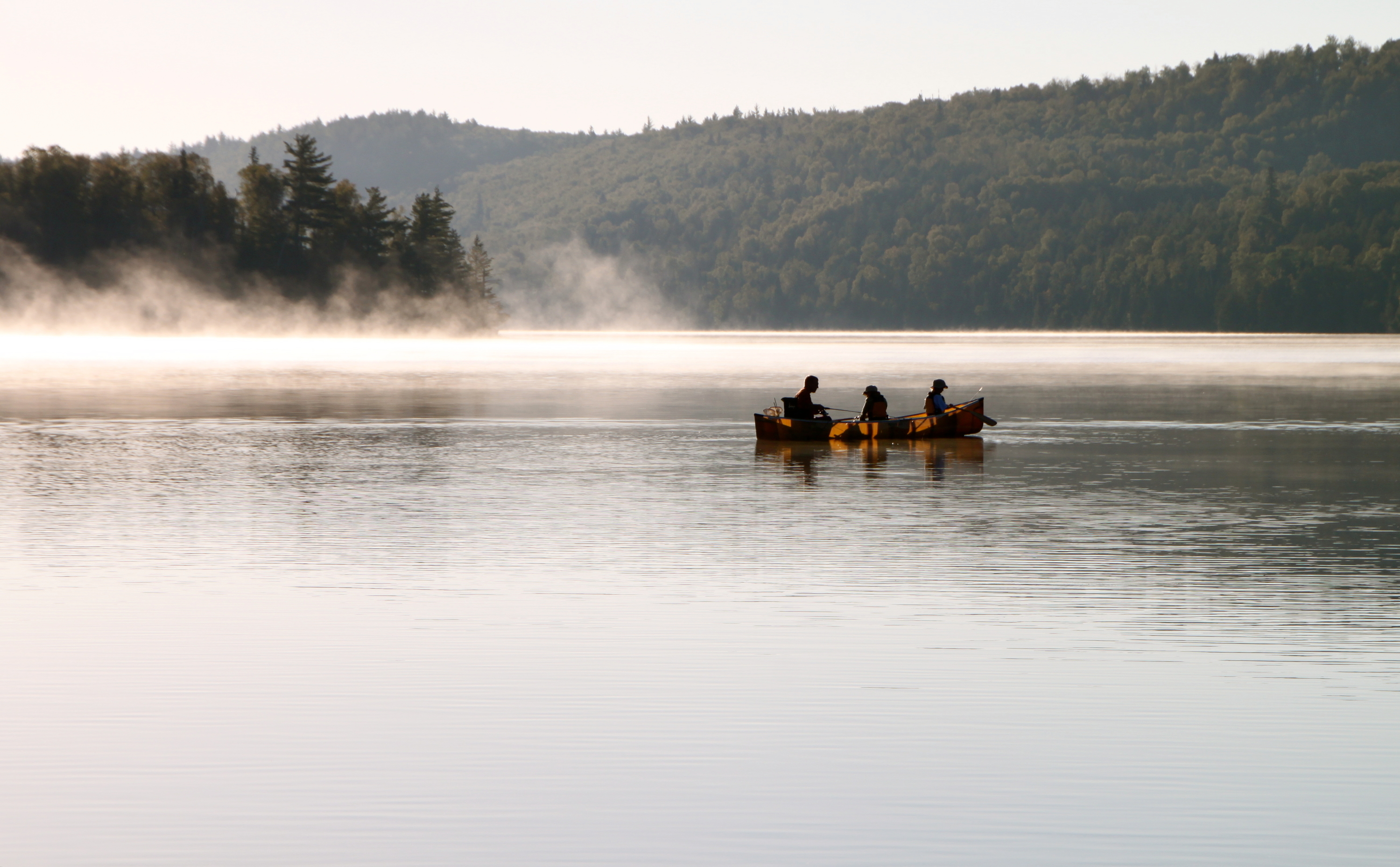
How to Navigate Minnesota with a Disability
How to Navigate Minnesota with a Disability
By Baya Clare
Accessibility matters regardless of why you’re coming to Minnesota — whether it be for a job, to start a business, to visit friends or family, or for vacation.
Fortunately, accessibility is a real cornerstone value within our state. Here are some of the ways you can make the most of Minnesota with a disability.

One of Delta's planes sits on the tarmac at MSP / Emmanuel Canaan
TRANSPORTATION
One of the main pillars of access is getting where you want to go. Minnesota’s transportation infrastructure is among the nation’s best in terms of its accessibility.
Minneapolis-St. Paul International Airport (MSP) has a comprehensive array of services and options available to disabled travelers. In addition to various types of assistance for wheelchair users and electric cart service to distant gates, it offers many services to other disabled passengers as well. There is web and phone-based interpreting services at information booths, hearing loop technology, and paging by text for deaf and hard-of-hearing travelers.
For blind and low-vision travelers, the airport now has Aira, which uses artificial intelligence and augmented reality to help visitors navigate the airport when needed. Many therapy dogs and cats are also part of MSP's popular Animal Ambassador program — one of the largest of its kind in the country.

An animal ambassador greets a family at MSP Airport
MSP also has a partnership with the Hidden Disabilities Sunflower Organization. HDSO helps people with hidden disabilities quietly indicate, via a sunflower lanyard, that they have a disability that may not be readily apparent. This indicates to airport staff that the person may need more assistance and that their patience is appreciated.
All bus, light rail and commuter rail transit provided within Minnesota by the Metropolitan Council and the Minnesota Department of Transportation is accessible. In addition, Metro Mobility — a shared ride public transportation service for certified riders who are unable to use other transit options due to a disability — is available in a large area of the Twin Cities metro. Trips can be booked online, by phone, or by a teletypewriter for any purpose.
Other parts of the state are served by paratransit providers as well, including Dial-a-Ride in the St. Cloud area, STRIDE in Duluth, and Smart Bus in Albert Lea, Owatonna and Austin. More information can be found at disabilityhubmn.org.

Nickelodeon Universe
SHOPPING
If shopping is your thing, you don’t need to go far from Minneapolis-St. Paul to find the largest mall in the country. Conveniently located in Bloomington, the Mall of America has hundreds of stores and restaurants on four levels plus an entire amusement park (Nickelodeon Universe) within its 2.8 million square foot space.
It offers wheelchair access throughout and a service animal relief area. MOA is also a Certified Autism Center, which means that the majority of the staff at the mall and at Nickelodeon Universe have completed autism sensitivity and awareness training.
Other venues that offer sensory-friendly spaces and events or times include the Minnesota Children’s Museum, the Walker Art Center, Heart of the Beast Puppet and Mask Theatre, the Guthrie Theater, the Minnesota Orchestra, and a number of movie theaters. Emagine Theaters provides sensory-friendly showings at select locations in Eagan, Lakeville, Rogers, White Bear and Woodhaven. Additionally, AMC Theatres collaborates with the Autism Society to offer sensory friendly screenings.

Science Museum of Minnesota / Paul Vincent
ART AND EDUCATION
The Minneapolis Institute of Art boasts more than 90,000 pieces of art from around the world, including one of the best collections of Asian art in the nation. It’s all accessible, from wheelchair access to captioned videos, ASL and Protacile interpreters to audio descriptions of artwork.
Visitors to the Science Museum of Minnesota in downtown Saint Paul can expect many of the same accommodations plus sensory-friendly resources when coming to see exhibits on light, dinosaurs, astronauts, the human body, the Mississippi River and an ever-changing selection of interesting, educational experiences and Omnitheater films.
In the southeastern city of Winona, the Minnesota Museum of Marine Art makes ASL interpreters available on request and provides large print text and audio guides for their permanent collection in addition to wheelchairs and walkers.

The Guthrie Theater, Minneapolis
THEATER
Minnesota has a thriving theater scene. The Guthrie presents Shakespeare and Dickens classics as well as cutting-edge new classic plays in a fully-accessible space which includes mobility accommodations as well as a variety of assistive options for deaf, hard of hearing, blind and low vision patrons. Periodic relaxed performances, modified to accommodate patrons with sensory sensitivities, anxiety, dementia and other challenges are offered as well.
Penumbra Theatre in Saint Paul, the nation’s first Black professional theater company, produces plays centered on the African American experience, and it offers wheelchair-accessible seating, an infrared listening system, and some interpreted performances. Interact Theater in Saint Paul produces shows with an ensemble of actors with disabilities and also serves visual artists. Other accessible metro theater options include Chanhassen Dinner Theatres, the Children’s Theatre Company, and Mixed Blood Theatre.
And the Twin Cities is certainly not the only place to find good theater. Rochester’s Civic Theater, Fargo-Moorhead Community Theatre and the Duluth Playhouse, among many other small regional professional and amateur companies around the state offer wheelchair-accessible seating, infrared listening systems, and interpreted performances.
A list of upcoming events around the state with accessible accommodations such as audio description, ASL interpretation, captioning, and sensory-friendly accommodations as well as wheelchair access is maintained at the Minnesota Accessible Activities Calendar website.

The view above Target Field / Brace Hemmelgarn / Minnesota Twins
SPORTS
Sports fans might want to catch a ballgame at Target Field — the home of the Minnesota Twins — in the North Loop of Minneapolis. Parking is accessible, as is seating, and there are elevators and ramps as well as listening devices.
U.S. Bank Stadium, home of the Minnesota Vikings, offers similar accommodations as well as wheelchair-accessible concession stands. The Minnesota Wild hockey team plays at the Xcel Energy Center in downtown St Paul, which is fully accessible as well, offering in addition to mobility access, closed captioning and interpretation on request, sensory kits for check out.
For those who like to play sports, there are a wide variety of adaptive sports recreation programs and camps offered throughout the state by universities, public school community education programs and non-profit organizations.

Myre-Big Island State Park / Minnesota DNR
OUTDOOR RECREATION
Minnesota is known for its many lakes and beautiful scenery, and it offers a wide variety of accessible outdoor recreation opportunities. There are 66 state parks, and an extensive network of state trails, many of which have accessible features.
Lake Shetek State Park, in the southwestern corner of the state, has more than seven miles of paved trails, plus six accessible camping sites. Two nearby parks, also with accessible camping or lodging — Blue Mounds and Minneopa — participate in the Minnesota Bison Conservation Herd project.
Blue Mounds also has electric track chairs available, as do more than a dozen other state parks. Track chairs are all-terrain, electric powered chairs which are all-terrain alternatives for designated trails which may not be accessible for regular wheelchairs.

Family at Gooseberry Falls State Park in Two Harbors / MN DNR
In the opposite corner, up near Duluth, Gooseberry Falls State Park is one of the most popular and scenic state parks on the shores of Lake Superior. It has accessible multi-use trails, including a section of the Gitchi-Gami State Trail, which when fully completed, will be an 86-mile paved trail for bicycle and wheelchair use along the North Shore from Two Harbors to Grand Marais.
The Minnesota Department of Natural Resources publishes a magazine, the Minnesota Conservation Volunteer, which is available as an audio recording to Minnesotans who are unable to see, hold, or handle the magazine in print.

Fishing in the Boundary Waters Canoe Area Wilderness / Cheri Beatty
In addition to state parks, there are many regional and city parks, resorts, campgrounds and beaches throughout the state. With so many lakes and rivers, it’s not surprising that fishing is a popular pastime. A number of organizations provide information and resources on adapted fishing equipment and accessible recreational opportunities, including Fishing Has No Boundaries, which hosts popular annual fishing events in Bemidji and Brainerd, and Let’s Go Fishing, which has chapters around the state.
Another non-profit which supports inclusive outdoor opportunities for people of all abilities is Wilderness Inquiry. Trips include destinations within Minnesota to the Boundary Waters, and around the world to places like Iceland and Kenya. There are affinity trips for Deaf, DeafBlind, Hard of Hearing and Neurodiverse people.
German Park's new accessible playground in New Ulm / Andrew Parks
FAMILY-FRIENDLY ACTIVITIES
Children will also find Minnesota’s outdoors varied and fun. There is a growing array of inclusive playgrounds around the state that feature ramps, high-backed swings, rubberized surfaces and other fun features for kids of all abilities. Inclusive playgrounds can be found in many parts of the state, including Bemidji, Cottage Grove, New Ulm, Woodbury, Red Wing, Willmar, St. Cloud, and Rochester.
Summer camp options for neurodiverse and physically disabled kids in Minnesota are growing as well, with offerings from the Autism Society, Camp Fire Minnesota, and Camp Courage among the many possibilities.

A blind skier takes a guided ride down Buck Hill / Paul Vincent
KEEP EXPLORING
Minnesota is truly a welcoming place for people of all abilities.
One of the best places to look for information and assistance is the Minnesota Council on Disability. It advises the executive and legislative branches of government as well as the public on matters pertaining to disability. MCD acts as a policy advisor and offers technical assistance and training to government agencies, community organizations and businesses.
Additional information on disability matters of all kinds can be found at disabilityhubmn.org.

